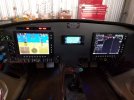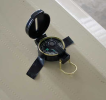Notatestpilot
Pre-takeoff checklist
- Joined
- Aug 31, 2020
- Messages
- 133
- Display Name
Display name:
Notatestpilot
I’ve had the same compass in my RV6 for close to twenty years now.
During the last couple flights I noticed it’s heading being off by 30 degrees from what my Dynon EFIS is showing.
Is it time to replace the magnetic compass?
During the last couple flights I noticed it’s heading being off by 30 degrees from what my Dynon EFIS is showing.
Is it time to replace the magnetic compass?


